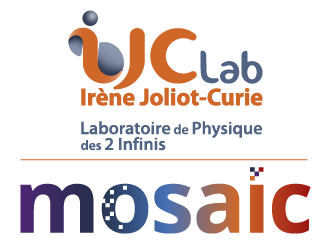Mass spectrometry analysis
The availability of beams of high-energy clusters and nanoparticles delivered by Andromede makes it possible to simultaneously determine the elemental and molecular composition of a complex surface, such as that of meteorites. The efficiency of these beams is 100 times greater than the ions used in ToF-SIMS in the keV range. In fact, the molecular mass is accessible for small quantities of materials in micro-domains. The identification of the mineral and organic phases is obtained by ion imaging using an electron and proton emission microscope.
These minimally destructive measurements, preserving the spatial information of the identified chemical components, leave the possibility of complementary measurements such as micro-Raman and infrared.
The use of nanoparticle beams as probes in biology (Nanoparticle Probe in Biology, NPB) comes from research on particle-matter-secondary emission interaction carried out in the laboratory for decades. This research has enabled the development of time-of-flight mass spectrometry (EVE Spectrometer) for the direct analysis of biological surfaces (without preparation) making it possible to characterize the chemical composition of a few tens of thousands nm3 by a single impact. The identification of biomolecules with sub-micrometric spatial localization is obtained by electron and proton emission microscopy (EVE MSI, Mass Spectrometry Imaging).







